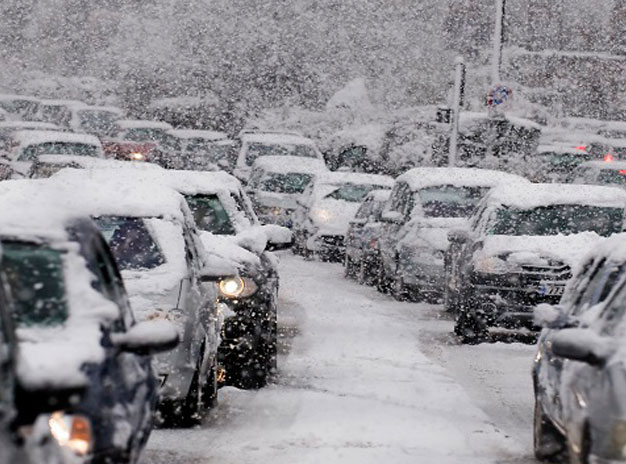Regardless of where they live, nearly all Americans are likely to face severe winter weather at some point in their lives. Winter storms can range from moderate snow over a few hours to a blizzard with blinding, wind-driven snow that lasts for several days. Many winter storms accompany dangerously low temperatures and strong winds, ice, sleet, and freezing rain.
A primary concern is that winter storms can knock out heat, power, and communications services to your home or office, sometimes for days. In addition, heavy snowfall and extreme cold can immobilize an entire region.
The National Weather Service refers to winter storms as “deceptive killers” because most deaths are indirectly related to the storm. For example, people die in traffic accidents on icy roads and of hypothermia from prolonged exposure to cold. Because of this, it is essential to be prepared for winter weather before it strikes.
Below are tips to protect your home and prepare your family for extreme weather:
Winterize Your Home
- Winterize your house, barn, shed or any other structure that may provide shelter for your family, neighbors, livestock or equipment. Clear rain gutters, repair roof leaks and cut away tree branches that could fall on a house or other structure during a storm.
- Extend your fuel supply by insulating walls and attics, caulking and weather-stripping doors and windows and installing storm windows or covering windows with plastic.
- Maintain heating equipment and chimneys by having them cleaned and inspected every year.
- Insulate pipes with insulation or newspapers and plastic and allow faucets to drip a little during cold weather to avoid freezing. Running water, even at a trickle, helps prevent pipes from freezing.
- All fuel-burning equipment should be vented to the outside and kept clear.
- Keep fire extinguishers on hand, and make sure everyone in your house knows how to use them. House fires pose an additional risk, as more people turn to alternate heating sources without taking the necessary safety precautions.
- Learn how to shut off water valves (in case a pipe bursts).
- Insulate your home by installing storm windows or covering windows with plastic from the inside to keep cold air out.
- Hire a contractor to check the structural ability of the roof to sustain unusually heavy weight from the accumulation of snow or water, if drains on flat roofs do not work.
Preparing Your Family
- Add these supplies to your emergency kit:
- Rock salt or more environmentally safe products to melt ice on walkways
- Sand to improve traction
- Snow shovels and other snow removal equipment
- Sufficient heating fuel
- You may become isolated in your home and regular fuel sources may be cut off. Store a good supply of dry, seasoned wood for your fireplace or wood-burning stove.
- Adequate clothing and blankets to keep you warm
- Make a family communications plan. Your family may not be together when disaster strikes, so it is important to know how you will contact one another, how you will get back together and what you will do in case of an emergency.
- Listen to a NOAA Weather Radio or other local news channels for critical information from the National Weather Service (NWS). Be alert to changing weather conditions.
- Minimize travel. If travel is necessary, keep a disaster supply kit in your vehicle.
- Bring pets/companion animals inside during winter weather. Move other animals or livestock to sheltered areas with non-frozen drinking water.
During Winter Storms and Extreme Cold
- Stay indoors during the storm.
- Walk carefully on snowy, icy walkways.
- Avoid overexertion when shoveling snow. Overexertion can bring on a heart attack—a major cause of death in the winter. If you must shovel snow, stretch before going outside.
- Keep dry. Change wet clothing frequently to prevent a loss of body heat. Wet clothing loses all of its insulating value and transmits heat rapidly.
- Watch for signs of frostbite. These include loss of feeling and white or pale appearance in extremities such as fingers, toes, ear lobes and the tip of the nose. If you or a loved one shows symptoms, get medical help immediately.
- Watch for signs of hypothermia. These include uncontrollable shivering, memory loss, disorientation, incoherence, slurred speech, drowsiness and apparent exhaustion. If you or a loved one has symptoms of hypothermia, get the victim to a warm location, remove wet clothing, warm the center of the body first and give warm, non-alcoholic beverages if the victim is conscious. Get medical help as soon as possible.
- Drive only if it is absolutely necessary. If you must drive, travel in the day; don’t travel alone; keep others informed of your schedule; stay on main roads; and avoid back road shortcuts.
- Let someone know your destination, your route and when you expect to arrive. If your car gets stuck along the way, help can be sent along your predetermined route.
- If the pipes freeze, remove any insulation or layers of newspapers and wrap the pipes in rags. Completely open all faucets and pour hot water over the pipes, starting where they were most exposed to the cold (or where the cold was most likely to penetrate).
- Maintain ventilation when using kerosene heaters to avoid build-up of toxic fumes. Refuel kerosene heaters outside and keep them at least 3 feet from flammable objects.
- Conserve fuel, if necessary, by keeping your residence cooler than normal. Temporarily close off heat to some rooms.
- If you will be going away during cold weather, leave the heat on in your home, set to a temperature no lower than 55° F.
Please note that the information contained in this posting is designed to provide general awareness in regard to the subject matter covered. It is not provided as legal, medical, or tax advice, nor is it intended to address all concerns in your workplace or for public health. No representation is made as to the sufficiency for your specific company’s needs. This post should be reviewed by your legal counsel or tax consultant before use.


